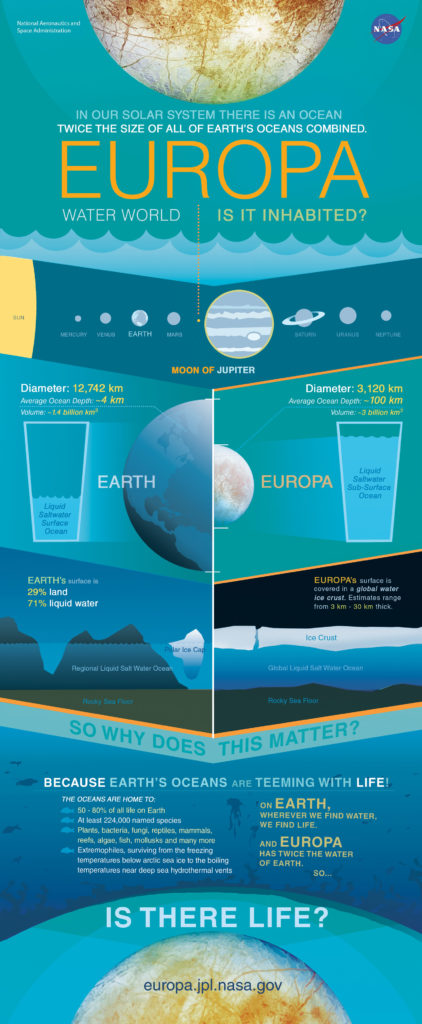NASA’s Europa Clipper mission to jupiter’s icy moon 26/08/2019 – Posted in: Daily News – Tags: Galilean moon, NASA
Europa Clipper mission to Jupiter’s icy moon
For: Mains
Topics covered:
- Next phase of development of the Europa Clipper mission.
- Features, Significances and instruments to be used during the mission.
News Flash
NASA has confirmed the next phase of development of the Europa Clipper mission. NASA is targeting to have the Europa Clipper spacecraft complete and ready for launch as early as 2023
- The latest development comes over 2 years after NASA originally announced its plans for the Galilean moon.
- Europa Clipper mission is an interplanetary mission to Jupiter’s smallest moon Europa.

NASA’s Europa Clipper mission
Mandate
The mission will conduct an in-depth exploration of Jupiter’s moon Europa and investigate whether the icy moon could harbor conditions suitable for life, honing our insights into astrobiology.
Instruments
- The mission will carry a highly capable, radiation-tolerant spacecraft that will perform repeated close flybys of the icy moon from a long, looping orbit around Jupiter.
- The payload of selected science instruments includes cameras and spectrometers to produce high-resolution images of Europa’s surface and determine its composition.
- An ice-penetrating radar will determine the thickness of the moon’s icy shell and search for subsurface lakes similar to those beneath Antarctica.
- The mission also will carry a magnetometer to measure the strength and direction of the moon’s magnetic field, which will allow scientists to determine the depth and salinity of its ocean.
- A thermal instrument will scour Europa’s frozen surface in search of recent eruptions of warmer water, while additional instruments will search for evidence of water and tiny particles in the moon’s thin atmosphere.
Highlights
- The nominal Europa Clipper mission will include 45 flybys of Europa.
- In the course of performing these flybys, the mission will also fly by the Jovian moons Ganymede and Callisto, although these flybys are solely to shape the orbit and would not drive science priorities.
Important Info
The space agency’s Jet Propulsion Laboratory in Pasadena, California leads the development of the Europa Clipper mission in partnership with the Johns Hopkins University Applied Physics Laboratory for the Science Mission Directorate.
The mission is managed by the Planetary Missions Program Office at NASA’s Marshall Space Flight Center in Huntsville, Alabama.
Source: NASA
ALSO, READ MORE DAILY NEWS
- Planet LHS 3844b
- Labour code on mandatory minimum wages
- Innovators Growth Platform
- New stegosaurus species discovered
- Stable cyclocarbon ring of 18 carbon atoms
- Iceland’s Okjokull glacier
- Magnetospheric Multiscale (MMS) mission
You are on the Best Online IAS preparation platform. You are learning under experts.
We are present on Facebook- Diligent IAS, LinkedIn- Diligent IAS, YouTube- Diligent IAS, Instagram- Diligent IAS. Get in touch with us.
